Amy Mishima's Happy Dog Owner Blog
What To Do With Your Dog When Kids Go Back To School.
Posted by john reh on Tue, Aug 19, 2014 @ 07:08 AM
Can you believe that in less than one week it’s back to school time for the kids of Elmhurst?
Back-to-school inevitably signals changes in our routines and everyone is most likely away from home for much longer periods of time. These changes can be especially hard on our family pet which can ultimately lead to depression or behavior problems.
Here are a few things you can do to help your pet's transition when the kids go back to school.
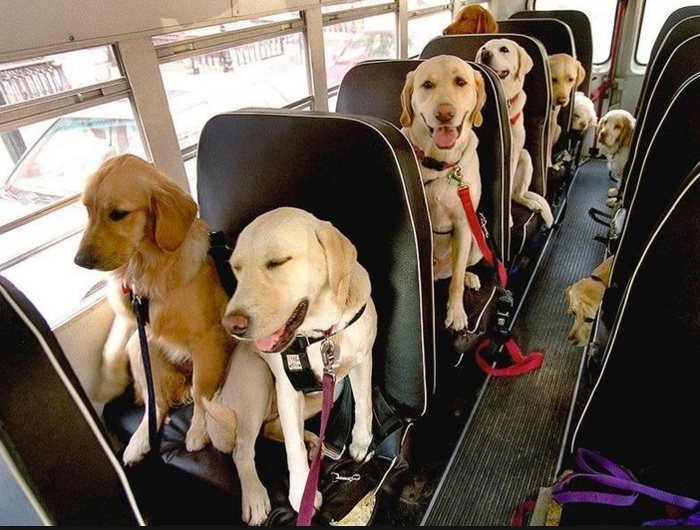
- Ease them into change. If there’s still time, have the entire family leave the house for increasingly longer periods so your dog is familiar with being alone. If your dog does struggle with separation anxiety at a high level, start getting the lunch boxes and book bags out throughout the day to help desensitize them to these objects that they will otherwise associate with being left alone.
- Establish a routine. Dogs are creatures of habit and changes in their routine can be the biggest cause of stress. While your scheduling carpools and after-school activities, it’s important to establish Fido’s new routine. Be sure to set regular feeding, walking, and play times for them.
- Increase your dog’s exercise. Many studies show that increasing your pet’s aerobic activity by only 30-minutes a day will help to eliminate separation anxiety. Just like humans, dogs are best equipped to relieve stress through physical outlets. Hiring a dog walker or dog runner to visit them midday will not only break up their day and give them a potty break, but it will allow them to burn off energy and relieve any boredom. You may even want to consider taking them to doggy daycare on days where you will be away for a prolonged period of time.
- Have a variety of mentally stimulating toys to play with. Puzzle toys that encourage your dog to look for hidden treats or Kong toys with a bit of peanut butter or other fillers will entertain your dog.
- Break out some tunes. It’s a common practice in dog shelters to play certain types of calming music to help the dogs relax at night. While it’s not a guarantee, I’ve found that playing classical music eases my dogs into a relaxed state.
- Quality (time) over quantity. Now that schedules are full, your dog may not get as much playtime or attention as they did during summer. Make sure you make the most of the time you spend with them. Long walks, trips to the park, lounging around on the couch, fetch in the backyard – do whatever you know makes them the happiest. Chances are, getting attention from you will make them happy so be sure your setting aside time for your pooch every day.
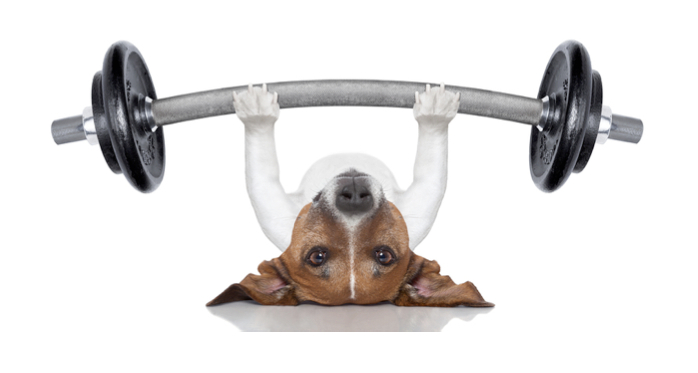
Dogs need their daily dose of exercise no matter what the circumstances are like outside. And this winter has surely caused several cases of cabin fever for our furry friends.
When we visit our dog walking and dog running clients in the winter but are forced to cut short the outside activities because of extreme temperatures, we continue the exercise inside. Here are some of the ways we keep our dogs active indoors and you can do them, too.
1. Play fetch.
Chances are if your dog likes to play fetch outside, they will love playing fetch inside. This is a great activity for owners with a long hallway or staircase. Not only is this a great workout for your dog, but it’s a good opportunity to work on basic obedience commands. When he grabs the ball or toy and is running back to you, say “come.” Once they return, ask them to “drop it.” Have them “sit” before you throw the ball again.
2. Teach them advanced tricks.
Sure, your dog might already know the basic commands, but why not have some fun with it? Tricks like “spin”, “ back”, “bow”, or even teaching them to retrieve something for you by name (like a pair of slippers, tissue paper, or a newspaper) are all challenging and fun. Teaching your dog new tricks isn’t only a great way keep them mentally stimulated, but it’s also a terrific bonding activity for the two of you.
3. Work on targeting.
Targeting is just the act of touching something. Dogs can learn to touch with any body part, but nose is an easy starting point. Teach your dog to touch their nose to your hand on command. This is a great skill and can help with teaching them new tricks; or even everyday things like getting on the scale at the veterinarians office or redirecting their attention to you if they become overexcited seeing another dog during a walk.
4. Play Hide and Seek.
You can play this in two ways. If your dog has a few favorite toys, try hiding them in various spots throughout the house. Once everything is hidden, ask your dog to find each of them. You may have to start with just one toy. Show your dog the toy, let them get really excited about it, ask them to sit and stay, then place 10 feet away or so. When you release them from the stay, tell them to “go find it” so they learn the command and associate it with the action. As your dog gets more familiar with this, you can start placing the toy further and further away.
If there’s more than one person at home, everyone can play. Everyone should grab a handful of treats. Each of you should try hiding in different spots of the house and take turns calling your dog once you are hidden. When they find you, give them lots of praise and reward them with treats. Now, the next person can call your dog and you can find another hiding spot.
5. Invest in a treat dispensing toy….you won’t regret it!
Speaking of new toys, treat dispensing toys are an amazing tool for giving your dog a mental workout and to alleviate canine boredom. Your dog stays busy pushing around the toy trying to get the treats inside. The toy motivates and rewards your dog all on its own!
Need some help letting your pooch burn off energy? Call Dogs Love Running! of Elmhurst and we’ll schedule a dog walker to exercise your dog no matter what it’s like outside. If you’d prefer the visit to remain indoors due to a certain type of weather condition, we will make sure to still provide your pooch with heart-pounding exercise and fun. We guarantee your dog will be smiling and panting by the end of our visit.
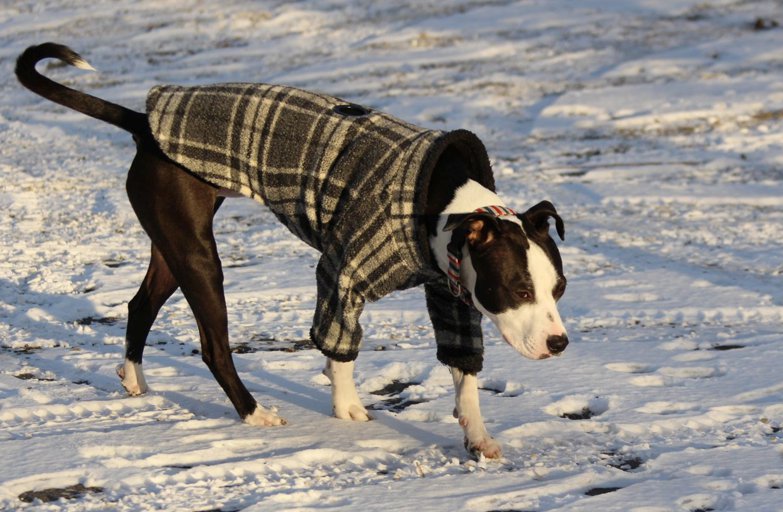
Keeping up with the theme of cold weather tips for walking dogs, I thought I’d answer the question that I’ve been asked at least 20 times in the last couple weeks:
- How cold is too cold to walk my dog?
Unfortunately, there isn’t one perfect answer for this. I don’t 100% buy the whole “if it’s too cold for you, it’s too cold for your dog” theory. And no matter how cold you feel, your dog still needs exercise during the winter.
After talking to a few veterinarians in Elmhurst and Lombard, I’ve come to a few generalized guidelines.
While there’s not one right answer for an exact safe outdoor temperature for your dog, here are some tips to keep in mind:- It’s important to know how much the wind chill lowers the feel of the actual temperature. You should always go by the temperature with the wind chill included.
- If it is snowing and it is especially wet snow, it can be more uncomfortable. Body temperatures will lower much faster with any type of moisture. You should shorten your walk time in those types of conditions.
- Most healthy medium or large dogs can walk for 30-minutes if the temperature is above 20 degrees F. Smaller dogs should limit the walk to 15 or 20 minutes if temps are between 20 to 32 degrees F. If it’s below 0 degrees, no dog should be out for a walk.
Your dog’s age, breed, and health are all major factors as well. Remember that puppies and elder dogs are much more sensitive to the cold weather because their bodies can’t regulate their body temps well. If it’s below freezing, these dogs should be taken outside to eliminate only.
Different breeds have better tolerance to winter weather. While no dog should be left out in the cold alone, breeds like German Shepherds, St. Bernards, and Akitas have thick coats that help protect them from the elements. Small dogs and short-haired dogs need a sweater or jacket for the added protection and warmth.
Any physical conditions like arthritis or hip dysplasia will only be aggravated by the cold. Keep pets with these conditions inside where it’s warm.
The best piece of advice I can give you is to know your dog - pay attention to the signals they are giving you. If they are shivering, standing in a hunched position, lifting their paw(s) off the ground, or giving you verbal cues (like whining or barking); bring them inside. More serious signs are things like lethargy, weakness, or slowed breathing which are all signs of hypothermia. Keep an eye out for frostbite as well. The most common places this will effect is their tail, paws, and ear tips. If they are turning pale or blue, get your dog to a veterinarian.
Bottom line, don’t let the cold weather keep your dog from getting exercise. You may have to limit your regular walk to only 5 or 10 minutes, but make sure to get them outside even if it’s just for a little bit when the weather is appropriate. If the weather isn’t cooperative, make sure they are getting sufficient potty breaks and find other activities indoors to keep their minds and bodies active.

It’s almost depressing when 33 degrees feels comfortable and no longer cold, but I suppose that’s what happens when we’ve been surviving a record breaking snowy and cold winter here in the Elmhurst, IL area.
It may be the end of January, but like any Midwesterner, I know Mother Nature has no plans to heat things up anytime soon. Here are some cold weather tips to keep your pooch safe and happy the next few wintery months.
- No dog should be left outside unsupervised. This tip is relevant year round (due to things like the summer heat, the threat of coyotes, etc...) and winter is no exception. Just because your dog has a fur coat doesn’t mean they can withstand frigid temps.
- Protect their feet. Dog booties not only provide a source of entertainment (ever see a dog try to walk in them for the first time?); but they provide better grip on the ice, protection against dangerous objects, and warmth. If your pet won’t stand for wearing booties, be sure to always wash off their paws with a warm wet towel to remove any ice balls or chemicals that may have accumulated between their toes. Their paw pads are tough, but salt and ice melts can cause them to sting and even crack.
- Old dogs, small dogs, and dogs with little fur should wear sweaters or jackets to protect against the cold. While this may seem frivolous, it is a necessity for many dogs. This extra layer will keep them dry, safe, and much more comfortable in severely cold weather.
- Keep them away from Antifreeze – this is highly, highly toxic. It only takes a few licks for this to be deadly.
- As harmless as it may seem, do NOT let them eat snow! Not only can the snow be hiding dangerous objects that you don’t want them to ingest, but eating too much snow can also cause hypothermia or an upset stomach.
- This may go without saying, but stay away from frozen ponds, lakes, and other bodies of water.
- Never leave your dog in a car unattended. We all know the threat of hot cars for our pets, but cold cars can pose just as significant a risk. Cars rapidly cool down in cold weather and become like a refrigerator which can cause your dog to freeze to death.
Exercise is important year round for our dogs. Don’t hibernate just because it’s cold outside. Keep these cold weather tips in mind and pay attention to the signs your dog is giving you.
If you don’t want to bear the cold, Dogs Love Running! Is here to help. We offer year-round dogs walking, dog running, and pet sitting for Elmhurst, Downers Grove, and other nearby Chicago suburbs.
Does anyone else feel like the term “doggy daycare” has become the cure-all for all canine behavioral woes and time fillers? Does your dog have separation anxiety? Partake in destructive chewing? Have poor social manners? Need something to keep him busy while you’re away at work all day? Just send them to doggy daycare and all is resolved! So you think…
Before you say that I am obviously against doggy daycare, I’ll gladly admit I think doggy daycare has lots of benefits. Doggy daycare is a great provider of exercise, stimulation, and socialization for our furry friends. But it’s important to remember that it is not a one size fits all solution.

I sent Riley (my oldest dog) to daycare for two years while I lived in the city but worked in the suburbs. She would get picked up each morning by their transport team. On occasion, I would still be home and she would walk out with them, tail wagging, smile on her face, and not look back at me! She would come home completely pooped, barely able to keep her eyes open long enough to eat dinner. And let me tell you, this gave me a ton of relief and made any guilt of being away from home for 12 hours completely null.
But getting to know Riley throughout the years, she’s very independent. As much as she loves to wrestle and run with a pack of dogs, she craves her own time. At dog parks, she’ll play with the other dogs for a few minutes, but also spends lots of her time on her own, sniffing and running free. For a dog like Riley, eight hours of constant play and doggy interaction can be really over-stimulating. Think about how tired your dog can be after only an hour playing at the dog park…
Hiring a dog walker can be a great alternative to daycare for several reasons:
- Your dog(s) will get one-on-one attention from their walker the entire time they’re together. Not only this, but your walker and dog will develop a close relationship and your walker will be able to tell if there are any behavioral or physical changes in your dog that you should be made aware of.
- If your dog is nervous, shy, or aggressive, keeping them in the familiarity of their own home and surroundings while you’re away is much more comfortable for them. Even for the most well-mannered dog, the constant barking and action happening in daycare can be too much.
- There is less risk of injury for your dog since they won’t be rough housing with other dogs. And even if your dog is super friendly, you can never be sure of the other dogs. Dog fights can happen with little warning. But if you hire a professional dog walker, interaction with other dogs can either be avoided or closely monitored (depending on the company’s policy).
- Along with injury, there is less risk of your dog catching any illnesses or disease like Kennel Cough.
- If burning off excess energy is important, why not hire a dog runner? A 30-minute heart-pounding run can do wonders for an overly hyper dog.
- Exercise is important, but so is mental stimulation. So, not only is the walk fulfilling their instinct to wander, but exploring and sniffing gives them the mental exercise they also need.
Even after writing this article, I’m still not convinced that I think one is superior to the other. They are different – both with their own benefits and shortcomings when compared to the other. But remember that the benefits and shortcomings are partly (mostly) based on your dog’s personality.
Like many dog owners, you’ve probably contemplated hiring a dog walker. And if you are like me, cost can be a big factor. Let’s face it, dogs are expensive. There are vet bills, the cost of food and treats, poop bags, and let’s not forget doggy apparel...we are heading into the fall season, after all.
Then there comes the cost of hiring a dog waker. You have a few choices here.
On one hand, there is the neighbor. You know this person, like this person, believe they are totally competent to walk a dog. I mean, how hard can walking your dog really be, right?

On the other hand, you have the professional dog walker. You don’t know them personally (yet) since you are most likely Googling dog walking companies in your area. And I’d be willing to bet they charge more per visit than your neighbor or friend.
So, who do you go with? The neighbor or the pro? To me, the answer is simple and let me explain why.
First, a professional’s number one priority is to care for your pet. They are there to do a job. A neighbor may be there because they are doing you a favor or to pick up a few extra bucks. The problem with that is they may not always take walking your dog seriously. And if something comes up, there’s a definite possibility that the visit could be rushed (or cancelled).
Going along with this, a professional will have a wealth of knowledge and experience to fall back on. Because dog walking and pet sitting is their job, they are around animals daily and know signs of illness, stress, or discomfort. Not only that, but they will have a plan in place in case of an emergency.
And rather than relying on a one man show, why not hire a professional? Professional dog walking companies will not only designate your pet with a primary walker, but there will always be a backup walker so you never have to worry about a no-show visit.
What about insurance and bonding? You are opening up your home to outsiders while you’re away, after all. A professional will carry insurance and bonding that is specific to this industry. That way, everyone is protected and covered.
I’m sure I overemphasized cost too much in the early part of this article, but I think that’s because that’s exactly where my mind goes when it comes to pet care. It’s expensive! But when I put it into perspective - being that my dogs can be equated to my children - I know I only want the best for them, especially if it means their life is literally in the hands of whoever is coming to care for them while I’m away.
I’ve said it time and again - you get what you pay for. You’re not just paying for a dog walker...you are investing in peace of mind.
And, of course, you can always contact Dogs Love Running! for your Elmhurst dog walking and pet care needs. We offer plenty of personalized pet services in Elmhurst, Lombard, and surrounding Chicagoland suburbs. Contact us today for a free trial visit!
In talking with my pet clients in Elmhurst and Downers Grove and other nearby areas, I often get a lot of questions (or more so, requests) regarding care for older dogs. New Dogs Love Running! clients will often tell me that their geriatric pooch spends most of its time sleeping, so the visit from us only needs to consist of a potty break and some TLC.
But why?
Just because your dog’s muzzle is going grayer by the day doesn’t mean they don’t need exercise.
Sure, it can be easy to watch our senior dogs snooze on the couch hour after hour because they look so content. But what a lot of loving pet owners don’t realize is that a little exercise can go a long way. Regular exercise will help keep your dog’s body weight at a healthy level which lessens their risk of some very serious health problems that can impact their internal organs as well as their joints.
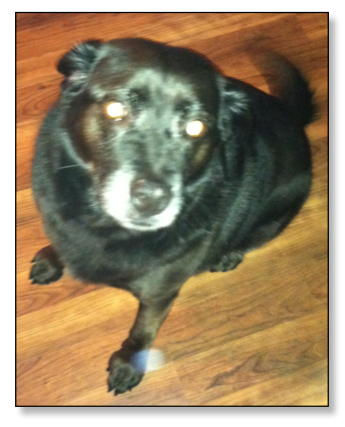
Of course, it’s of the utmost importance to take your aging dog to the vet regularly. While you’re there, why not ask your vet how much exercise they recommend for your pooch. Generally, a couple 20-minute moderately paced walks every day is sufficient. But your vet can let you know if your dog has any underlying health conditions that might be aggravated by certain types of exercise.
Don’t be fooled by our name. Dogs Love Running! does much more than run dogs.
So while we won’t be taking your senior dog on a heart-pounding 30-minute run, we will absolutely tailor the visit to best meet their needs while still slipping in some form of exercise. If your dog isn’t used to being exercised, we can start with something as simple as a 5 or 10-minute walk. You’d be surprised how quickly their stamina and muscles can rebuild even in their later years.
No one knows your dog better than you. And any activity plan that will be done during our visits with your pooch would be discussed with you first. Dogs, being the loyal animals they are, won’t tell us when they’ve reached their limit. So with the advice from you and knowing the normal signs of being overworked (excessive panting, favoring a paw, or slowing down), we can exercise your older dog in a way that is fun and enjoyable for them.
So what do you say? Let’s keep our dogs in tip top shape. Why not let their golden years be the best years of their life!
I recently moved and finally have a fenced in backyard. Any dog owner who has lived in a condo or apartment can understand my excitement (and relief) to be able to let my two dogs play in the backyard to burn off energy. But I have to admit, I’ve been finding myself slacking a bit in the dog walking area. Mind you, I am the owner of a dog walking and running company in Elmhurst so it’s quite embarrassing to admit that my own dogs have not been getting their daily walks. So, to all my fellow dog parents, I’m here to remind you (and myself) how incredibly important dog walks are for our furry children.
Let’s start with the obvious point that walking your dog is a great source of physical exercise. Dogs who exercise regularly tend to be healthier and have a lesser chance of developing pricey health issues like arthritis, heart disease, or diabetes. Just like us, dogs will pack on unhealthy pounds without exercise, and lose strength and endurance which is important as they age.
And you know that old saying, “a tired dog is a well-behaved dog”? I’m in agreement with that statement. I still think all dogs should know basic obedience commands, but a worn out pooch is far less likely to get into mischief than one with pent up energy. Most “bad dogs” are acting out of sheer boredom when they’re destroying shoes, newspapers, couches, or anything else they can get their little paws and slobber on.

This is the point where you ask why letting them run around, wrestle, and play in the backyard isn’t just as good as a dog walk….
My answer is simple – playing in the backyard is not a substitute for a dog walk because it doesn’t provide the mental stimulation our dogs crave, nor does it fulfill their inherent need to wander and explore.
Dogs have a primal need to walk. In the wild, dogs wake up each morning and walk with their pack. There is a migration instinct within them that a walk fulfills. Only on walks can your dog explore their surroundings and investigate all the smells, sounds, and sights. So not only do walks help your pup stay in shape, but it’s also a very necessary mental health boost for them.
Generally speaking, most dogs need 30 to 60 minutes of exercise each day. That sounds great on paper, but for a lot of us, there doesn’t seem to be 30 waking minutes to spare. If the reality of ever day life is interfering with your ability to get your dogs out on leash, we’ve got you covered. Our team of professional Elmhurst dog walkers and runners can surely help fulfill your pooch’s need for mental and physical stimulation.
How do you find a good dog training program?
The best way I know is through a referral from a family member, friend, or any other dog lover you trust. As a professional dog lover and local pet care business owner, my vote is for Wiggles N Wags in Lombard and here are five reasons why.

1. Variety of classes offered
Yes, Wiggles N Wags offers all the usual dog training classes that any established facility would. But WNWs understands there’s more than just ‘sit’, ‘stay’, and ‘down’. For those people that want to have fun, WNWs offers classes like the Trick class where your dog will learn awesome things like skateboarding; or the Click Your Heels class which incorporates games to help your dog’s focusing skills.
WNW’s continually offers one day workshops and seminars for even more options to learn and practice new and everyday skills. One current workshop is the Mind Your Manners workshop series which contains individual classes such as ‘Polite Greetings’ and ‘Walk Nicely’ to help teach dogs everyday manners. How practical.
The point here is that their training program has countless chances for your dog to socialize, learn new skills, and apply those learned behaviors.
2. Positive reinforcement training only!
Wiggles N Wags highly stresses and recommends positive reinforcement training techniques. As a student, you are taught to ignore undesirable responses until your dog behaves appropriately. Food, praise, and play are all appropriate rewards for good behavior. There’s no need for yelling, choking, or other actions done to inflict pain or fear in the dog. The point of training does not only have to be to learn behaviors, but to also build confidence in you and your dog.
3. FREE Puppy Social
Who doesn’t love free things and puppies? WNW’s offers one hour each Tuesday for puppy social time. It’s important for puppies to explore, exercise, and learn how to meet and interact with new humans and puppies. The easiest way to create an easily adaptable, healthy, and well-adjusted dog is simple – socialize from the time they are young.
4. Dedicated and knowledgeable trainers
There is a noticeable passion at this facility. The vibe is upbeat, enthusiastic, and inspiring. Don’t take this the wrong way. It just means that training a dog isn’t easy. You need an enthusiastic trainer, one that will keep you and your dog motivated to push on! The trainers help each student in a supportive, collaborative way. They are all knowledgeable and really tailor their techniques and advice based on each student.
5. Cherish and promote pet adoption
Pet adoption is nearest and dearest to my heart so it always makes me smile to know there are other pet professionals that are dedicated to sharing helpful tips to new dog owners. Julie, one of my favorite WNW’s trainers, just released a book titled A Sound Beginning which lays out useful advice to help introduce a newly adopted dog (or any dog, really) into your home. Many of the lessons in this book mirror those that are taught at WNW’s. You will notice a common theme with all of their training. It has the end goal of helping you and your dog live in harmony.
Well, that’s my spiel on Wiggles N Wags. Don’t take my word for it. Stop into the facility and observe a class. You’ll like what you see!
Wiggles N Wags Dog Training
216 E. St. Charles Rd.
Lombard, IL. 60148
Ph:630-832-3001
The last thing anyone wants on vacation is being stressed out. But if you have a pet that you need to leave behind while you’re away, you understand that this feeling can be all too common. While there is the equally popular option of boarding your cat or dog, this article is specifically about pet sitting.
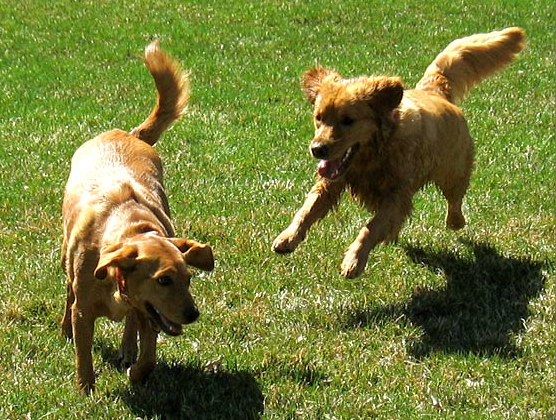
Simply defined, pet sitting is the act of caring for pets in their own home while the owner is away. And keep in mind that when I say pet sitting, I’m referring to a reputable pet care company, not a neighbor or friend.
Let’s start with the cons. What are the reasons for finding another pet care alternative instead of pet sitting?
The pet sitter will need to enter your home while you’re away. This may seem obvious, but it’s definitely a legitimate concern. Be sure you choose a pet sitting company that thoroughly screens their sitters.
Another negative is that your pet will be alone for much of the day. This may not be detrimental if you work since your pet is already used to that, but it could be stressful for pets that are used to having company throughout their normal day.
Now, the pros of pet sitting.
Your pet gets to stay within the comfort of their own home and can stick to their everyday routine of feeding, potty breaks, walks, and playtime. As the owner of an Elmhurst pet care company, we make it top priority to keep detailed notes on every important detail of our clients’ pet’s normal day and will find a solution that allows them to stick to that regime.
Sitters can do the housesitting chores in addition to caring for Fido. They can bring in the mail, water plants, turn the lights on or off, and ensure your house is maintained.
Pet sitting is more personal. The visits will be done on your requested schedule. And your pet is getting one-on-one attention and care.
There is less risk for them to be exposed to contagious illnesses that may be lurking in a kennel.
This corresponds to the first pro above, but if you have an anxious pet, it will definitely be easier for them to relax at home rather than being in a kennel where there is very rarely quiet time. The constant barks of other dogs may make it harder for certain pets to settle down if they aren’t used to a constant level of noise.
As the pet parent, you won’t have the hassle of dropping off and picking up your pet from anyone or anywhere.
Should you decide that hiring a pet sitter is the best way for your beloved pet to remain as comfortable and happy as possible while you’re away, make sure to thoroughly check into whatever pet sitting company you choose. Go with your gut. If you don’t feel comfortable with the sitter you’re meeting, on to the next!
Believe me, there are plenty of pet care companies out there and it’s important to find the right one for you and your pet.
Feeling 100% secure with the decision you make will allow you to spend your vacation stress free and as relaxed as a vacation should be.

